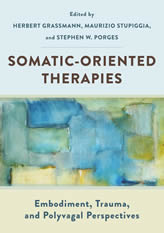Active Pause Series
Because many of our readers do not follow our website or Facebook page, SPT Magazine is offering the first three of Serge Prengel’s Active Pause articles in one PDF so the flow from one to the next is maintained for our offline readers. We invite you to follow us online as Serge will continue to offer articles in the Active Pause series.
TIME’S UP! 2020 – The Time for Limits
Time is up for humanity’s relational style, currently dominant on our planet, with its reactively phallic, defectively insufficient oral trait prevalence, which is ever more borderline and narcissistic. It has produced the entropic collapse in which we find today’s Social Living Body. We now need other trait patterns and other relational styles, with a different how in our relationship with the Other-than-Self World!
SPT Magazine Volume 10, Number 1 online now
During this time of “shelter in place” and complete global uncertainty, I’m thankful for our virtual community. Thank you all for reaching out to write, to vlog, to connect and share your knowledge, your thoughts, and your feelings. We are embodied beings with an instinctual need for closeness, touch, presence. Despite the physical distance, I feel grounded and touched by all who have reached out.
Seeking Therapists for the Traumatic Stress Research Consortium
The Traumatic Stress Research Consortium, founded by Dr. Stephen W. Porges, is seeking therapists to join in their research projects.
Dr. Stephen Porges Researching COVID 19 Impacts
Researchers from Indiana University in collaboration with Dr Stephen Porges are interested in your perfections of and reactions to the COVID-19 virus.
Active Pause® Part 3: The Pause as a Redefining Moment
This article is part 3 of a continuing series about Active Pause. In part 2, I showed how the pause is part and parcel of the process of integrating our experience. Here, I will be describing it as a redefining moment. It is a perspective I like to share with clients, to put our work in context.
Stephen W. Porges: Countering the effects of social distancing
Social distancing and separation are a big part of what is needed to deal with the pandemic. In this short conversation, Serge Prengel and Stephen W. Porges talk about how to counter their effects because we still need to be sensitive to our nervous system’s need to socially engage and connect. While we need to isolate to slow down the progress of the virus, we still need to connect, to co-regulate. Steve and Serge discuss ways to mitigate our need to connect. Noting our evolutionary need for facial expression and vocal intonation, they said that using the telephone and video conferencing tools are far better than texting and email (which strip the human factors from the words).
Couple Armour: The Process of Melting Couple Armour through Body Psychotherapy
Sarah and David sit across from me. Their chairs are far apart and turned towards me. They escape eye contact by focusing on me. It’s our first session. Tension is evident and felt, in all senses. This is a well- known situation when couples start therapy that stems from normative embarrassment and difficulty seeking help.
During our first conversation, I listen to them while trying to feel the energy and atmosphere in the room. I look inwards, feel my body, my breath. I resonate with myself and with them. The room feels cramped, stiff. There’s a sense of heaviness. The atmosphere is remote, and it seems cold. I notice that neither of them is breathing, and it affects my breathing, which also halts. Out of awareness and inner resonance, despite the tension I breathe deeply. I reflect to the couple: "There’s so much tension in the room," and then I take a deep breath again which allows Sarah and David to breathe as well, to release some of the difficulty, and start discussing what's in their hearts.
In the Bleak Mid Winter
My Mum recently asked my partner and I what we were doing for Christmas. I was slightly surprised to find myself announcing that I was cancelling Christmas this year. Here we were, together in late summer, celebrating my stepdad’s 70th birthday. I was more than happy to get together, to mark midwinter, to mark the passing year, maybe, but I had no desire to mark the 25th December.
A Somatic Strategy for the Holiday Season
Our ideas of how the holidays should go can be a sticky combination of tradition, experience, marketing, and . . . fiction. Year after year I see my clients reflect the stresses of the season as old issues surface and old patterns take hold. Just around the corner from Halloween, the body starts to brace for the inevitable and resiliency disappears. Conflicting feelings of anticipation and anxiety
show up in the body as a tangle of shoulder-neck-jaw tension, low back pain, random injuries, and general uptightness. In
order to extend the good work beyond our ninety- minute session, I’ve developed a simple somatic strategy to change
the holiday dynamic.











